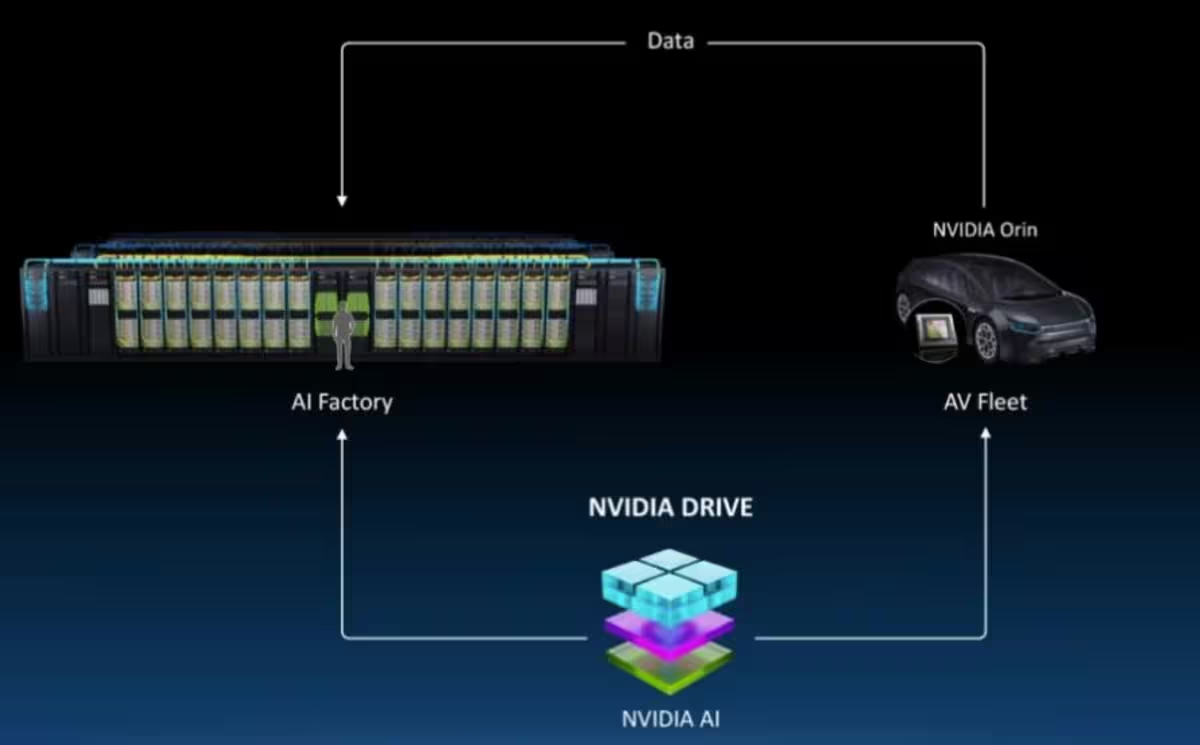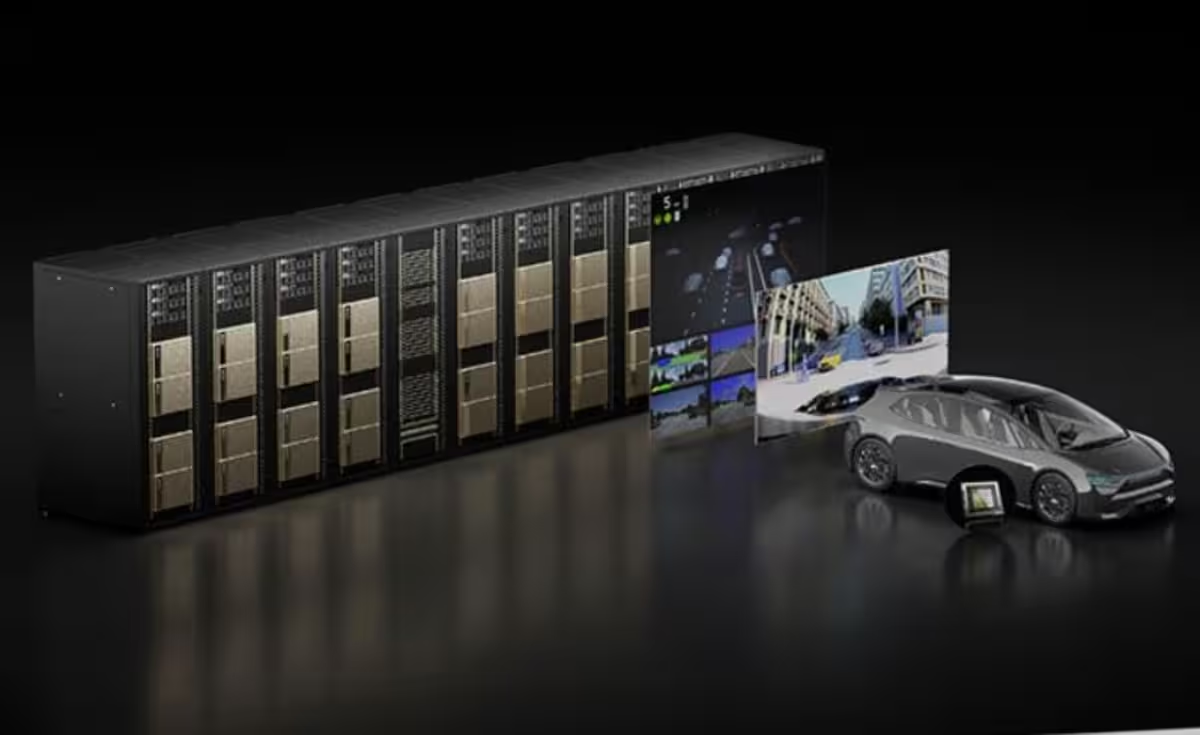Nvidia Automotive - from Infotainment to Autonomous Driving
Why is Nvidia so successful in the automotive industry?
Nvidia’s foray into the automotive industry started modestly with its GPUs powering infotainment systems and dashboard displays. Over time, Nvidia’s ambitions evolved from enhancing in-car entertainment to taking control of vehicle intelligence itself, developing the essential hardware and software that drive autonomous vehicles (AVs) and advanced driver assistance systems (ADAS).
The company's Nvidia DRIVE platform, launched in 2015, represents a complete ecosystem for AVs, including hardware for real-time perception, mapping, and decision-making. At the heart of this platform is Nvidia’s powerful processors like the Orin system-on-chip (SoC), which boasts impressive computational performance critical for autonomous driving tasks. Such complete ecosystems and SoC's are not easy to develop (we won't get into the details in this article), and provide a huge value add to car manufacturers. They do not need to invest heavily into developing such solutions themselves, they do not have to worry about software and hardware releases and their fluid synchronisation and most of all: they do not have to train the models themselves to reach market expectations. Incumbant solutions such as Nvidias', while expensive, can often provide a positive business case. The Nvidia platform is built to handle a variety of driving functions, from basic ADAS to fully autonomous systems, ensuring scalability and future-proofing for automakers.
What is special about NVIDIA Drive platform?
Nvidia’s DRIVE Hyperion platform is designed to support the evolution of AV technology. Nvidia’s chips allow cars to ‘see’ and interpret the world around them using real-time camera feeds, LIDAR, and radar data, while its AI models assist in making critical driving decisions.
What sets Nvidia apart is its system-level approach, which not only includes the processing power needed for AVs but also integrates advanced AI models that learn from massive datasets of driving scenarios. This vertical integration, from hardware to AI software, gives Nvidia a competitive edge over other chip manufacturers.
Nvidia’s hardware is already found in vehicles from leading brands such as Mercedes-Benz, BYD, and Volvo. As more manufacturers adopt the DRIVE platform, the company is becoming the backbone of the AV revolution. Nvidia’s leadership believes its automotive division, which generated over $1 billion in revenue in 2024, will eventually rival the company’s historically strong gaming segment.
How is Nvidia growing through strategic automotive partnerships?
Nvidia has forged strategic alliances with a wide range of automakers and tech firms to accelerate the adoption of autonomous vehicles. Its partnership with Foxconn, for example, involves the development of electronic control units (ECUs) based on Nvidia’s DRIVE technology. The collaboration aims to supply next-generation ECUs for the global automotive market.
In addition to its hardware capabilities, Nvidia has expanded its software offerings. Its Nvidia Omniverse platform, a tool for real-time 3D content creation, is gaining traction in automotive design and simulation. Automakers can use this technology to create digital twins of their vehicles and simulate autonomous driving scenarios, significantly reducing the development time for AV technology.

The Growing Role of AI and Deep Learning
As the automotive industry shifts towards autonomous and semi-autonomous vehicles, the demand for AI-driven solutions continues to grow. Nvidia has long recognized that advanced driver-assistance systems (ADAS) and fully autonomous vehicles rely heavily on AI to make sense of real-world driving data in real-time. Nvidia’s investment in AI development ensures that its chips are capable of running complex AI models that can safely guide a vehicle through dynamic and unpredictable environments.
Nvidia’s CUDA platform also plays a crucial role by providing developers the tools to optimize their AV software. CUDA enables real-time data processing and model training, which are essential for vehicles to react instantly to changing driving conditions.
The Future of Nvidia in Automotive
With over 70% of Nvidia’s automotive revenue stemming from its *DRIVE* platform, the company has made it clear that it is not just building chips for cars but creating an entire ecosystem that will define the future of transportation. Nvidia’s dominance in AI and hardware, along with its ability to deliver scalable systems, positions it at the center of the autonomous driving revolution.
Looking ahead, Nvidia’s automotive division is expected to grow significantly as more automakers embrace autonomous technology. The company’s investments in research and partnerships with automakers ensure that Nvidia remains a key player in shaping the future of the automotive industry.
The EV-Global Verdict: Nvidia's future
We do believe Nvidia's currenty ecosystem and SoC solutions are at a level, which hardly any car manufacturer can develop themselves with a quick Go-to-Market. Nvidia’s move into the automotive space represents a natural evolution of its capabilities in AI, graphics processing, and system-level integration. By providing the necessary hardware and AI-powered software, Nvidia is enabling automakers to push the boundaries of what is possible in autonomous driving. As the race towards fully autonomous vehicles continues, Nvidia’s influence is poised to grow, driving innovation in the automotive sector for years to come.



